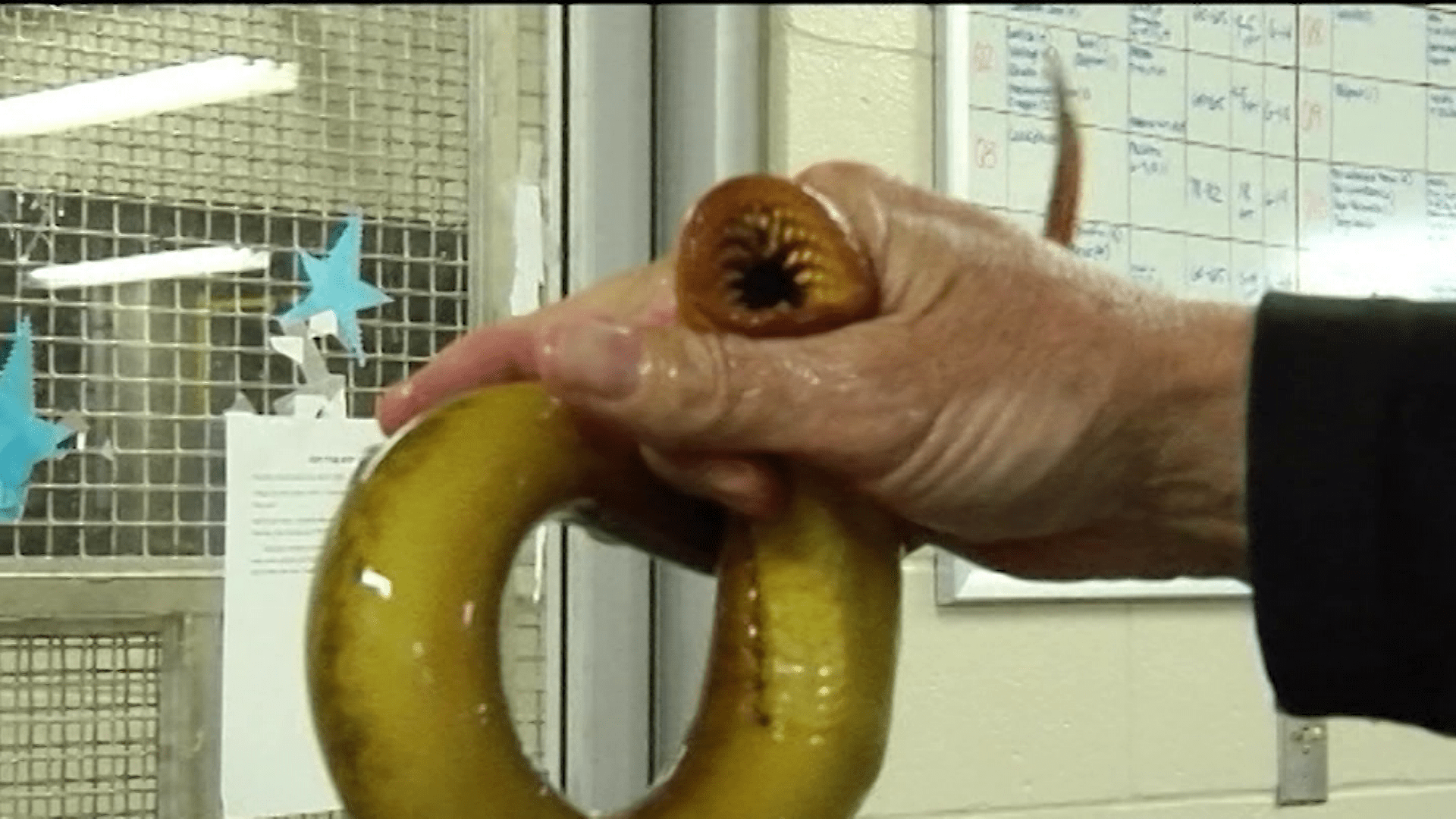Sea Lamprey: the Vampires of the Great Lakes
[anvplayer video=”5180809″ station=”998130″]
Sea Lampreys, they have been an invasive species in the Great Lakes for over a century. While their numbers wreaked havoc in the 19th century, efforts to keep them in check have proved successful. However, due to social distancing from the COVID-19 Pandemic, Sea Lamprey trappers had difficulty limiting the invasive species.
Greg McClinchey with the Great Lakes Fishing Commission said if you see a Sea Lamprey while fishing, carefully remove it. Then humanely end the Sea Lamprey to prevent more fish from being hurt. We basically seek to control about 8 million Sea Lamprey a year in all of the Great Lakes. And so that, math adds up very quickly, there’s always a lag in those numbers, we can only count them once they’re out in the lake.” McClinchey said.
While they haven’t been a risk to humans, they’re still an issue in the great lakes for the native fish. “We always kind of refer to them as the grandmother, if you will, of invasives.” McClinchey sadi. “While we have a really good way to control them, which is not the case for all invasives, if they were to be left unchecked, there would have the potential to wipe out a fishery and literally wipe it out in a very, very short amount of time.”
Jay Walker of the Great Lakes Aquarium talked about how organizations like the Minnesota DNR are trying to keep the lampreys from getting into our rivers. “They set up barriers so that Sea Lamprey can’t travel up the rivers to spawn. They have traps that trap the animals and they use the lamprey side for the for the annual seeds or the juvenile stage of the of the animal that they can they can target them.” Walker said. “If you’re going to be in a body of water, there are postings of what species are there. So, you know, it’s always good to teach yourself what’s happening, be aware and then and we can do our part to help stop spreading it throughout the state.”
For more information about Sea Lampreys you can look here. For other outdoor stories you can read more here.
